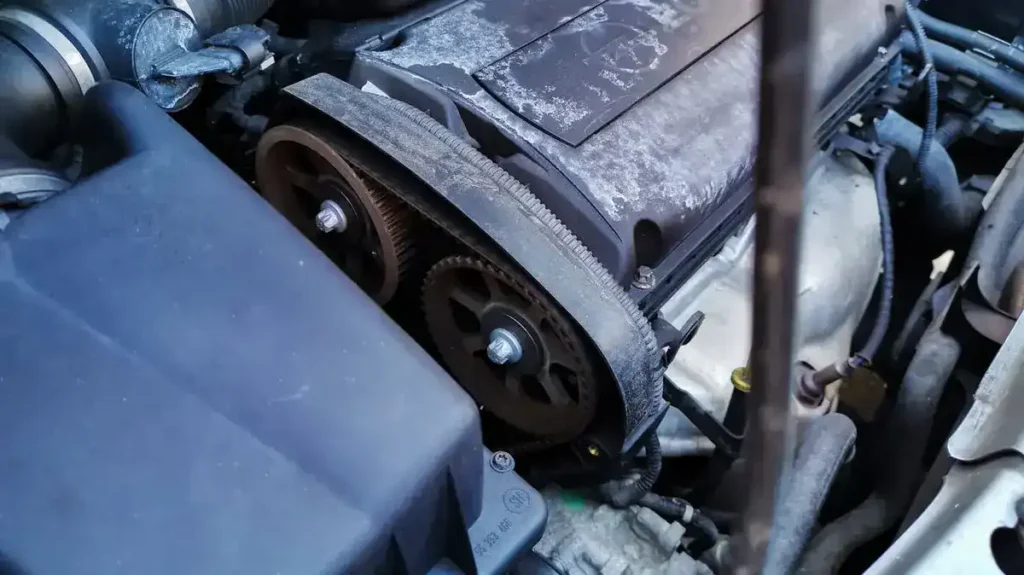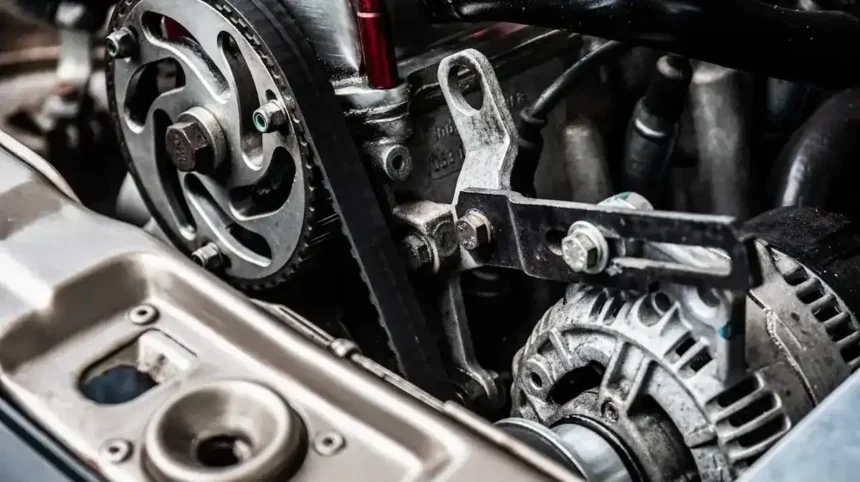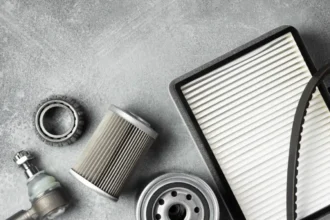If your car’s timing belt fails, it can lead to an unexpected engine shutdown, leaving you stranded in the middle of the road. This critical component ensures that your engine’s valves and pistons operate in sync, and neglecting it can cause severe damage to your vehicle. Knowing when to replace the timing belt is key to avoiding sudden breakdowns and costly repairs.
In this article, we’ll guide you through everything you need to know about timing belt replacement—why it’s crucial, when to do it, signs that it may be wearing out, and how regular car maintenance can save you from unwanted expenses.
Let’s dive into the details and help you keep your car running smoothly!
What is a Timing Belt, and Why Is It Important?
Your car’s timing belt is a key part of the engine’s internal workings. It’s responsible for synchronizing the movement of the crankshaft and camshaft, ensuring that the engine’s valves open and close at the right time. This is crucial for proper combustion.
If the timing belt breaks or slips, your engine can stop running entirely, or worse, suffer internal damage. In many cars, a broken timing belt can lead to bent valves, damaged pistons, or even a completely destroyed engine.
How Often Should You Replace the Timing Belt?

Now to the big question – when should you replace your car’s timing belt? The answer varies depending on your car’s make and model, but generally speaking, you should aim to replace it between 60,000 to 100,000 miles.
Most car manufacturers list timing belt replacement intervals in the owner’s manual, and they may vary from 5 to 10 years if the mileage hasn’t been reached.
Here’s a quick reference for common replacement intervals:
- Older vehicles (pre-2000 models): Replace every 60,000 miles.
- Newer vehicles (2000 and newer): Replace every 90,000 to 100,000 miles.
- High-performance cars: Check more frequently, at around 50,000 miles.
If you’re unsure, consult your owner’s manual or ask your mechanic during your regular car maintenance checks.
What Happens If You Don’t Replace the Timing Belt?
Neglecting to replace your timing belt can result in severe engine damage. Here’s a breakdown of the risks:
- Engine Failure: The most immediate danger is a complete engine shutdown, leaving you stranded.
- Internal Engine Damage: In interference engines, a broken belt can cause the pistons to collide with the valves, resulting in bent valves, damaged pistons, or even a destroyed engine.
- Costly Repairs: Replacing a timing belt may cost a few hundred dollars, but fixing an engine damaged by a broken timing belt can run into thousands.
Signs Your Timing Belt Needs Replacement
While the timing belt is hidden inside the engine, there are a few warning signs that may indicate it’s nearing the end of its life:
- Ticking noise from the engine: A worn belt may produce a high-pitched ticking noise.
- Engine misfires: The belt could slip and cause the engine’s cylinders to open and close out of sync.
- Oil leakage: Oil leaking from the timing belt cover may weaken the belt over time.
- Engine won’t start: If the belt breaks, the engine won’t start at all.
Table: Timing Belt Replacement Costs by Car Make
| Car Make | Average Cost (Labor + Parts) | Recommended Replacement Interval (Miles) |
|---|---|---|
| Toyota | $500 – $900 | 90,000 – 100,000 |
| Honda | $600 – $1,000 | 90,000 – 105,000 |
| Ford | $450 – $850 | 60,000 – 100,000 |
| BMW | $1,000 – $1,500 | 60,000 – 100,000 |
| Subaru | $600 – $1,200 | 60,000 – 90,000 |
| Volkswagen | $800 – $1,200 | 70,000 – 100,000 |
Note: Prices may vary based on location, labor costs, and specific model variations.
Why Timing Belt Replacement is Key to Car Maintenance
Routine car maintenance goes a long way in extending the life of your vehicle, and replacing the timing belt is one of the most important tasks. Skipping this vital repair can result in a domino effect of engine issues that no amount of oil changes or tire rotations can prevent.
Read More: 5 Tips to Improve Your Car’s Fuel Efficiency
Other Car Maintenance Tips to Pair with Timing Belt Replacement:
- Replace the water pump: Since the timing belt drives the water pump in most cars, it’s smart to replace both at the same time.
- Inspect the tensioners: The timing belt tensioner ensures the belt stays tight. A worn tensioner can cause the belt to slip.
- Check the drive belts: Timing belt replacement is a great time to inspect other belts, like the serpentine or alternator belts.
FAQs on Timing Belt Replacement
Q1. How do I know if my timing belt is worn out?
A: The best way is to follow the manufacturer’s recommended schedule, but signs like engine misfires, ticking noises, or oil leaks around the belt cover can be indicators.
Q2. Can I replace the timing belt myself?
A: Replacing a timing belt is a complex task that requires specific tools and knowledge of the engine’s internal components. It’s best to leave it to a professional unless you have significant mechanical experience.
Q3. What happens if the timing belt breaks while driving?
A: If your car has an interference engine, a broken timing belt can cause major engine damage, including bent valves and damaged pistons. If it’s a non-interference engine, your engine will stop running, but likely without internal damage.
Q4. Is it worth replacing the timing belt on an older car?
A: Yes, if your vehicle is still in good working condition and you plan to keep driving it. The cost of replacing the timing belt is far less than repairing or replacing an engine damaged by a broken belt.
Q5. Can a bad timing belt affect the water pump?
A: Yes. In many cars, the timing belt drives the water pump, so if the belt fails, it can stop the water pump from circulating coolant, causing the engine to overheat.
Conclusion: Don’t Wait – Replace Your Timing Belt on Time!
Keeping up with timing belt replacement is essential to avoid costly repairs and extend the life of your vehicle. Whether you’re at the 60,000-mile mark or closing in on 100,000 miles, replacing the timing belt as part of your regular car maintenance routine is a smart investment.
By staying proactive, listening for warning signs, and following the manufacturer’s schedule, you can avoid the headache of an unexpected breakdown and keep your car running smoothly for years to come.








